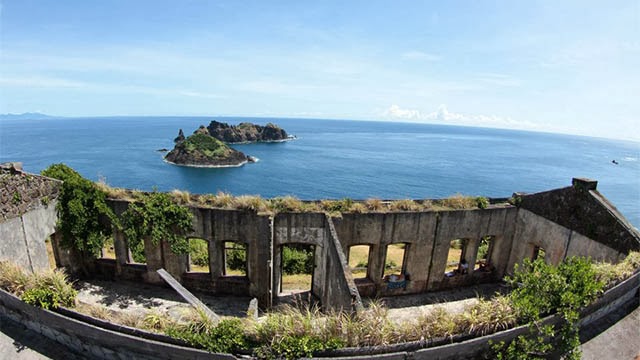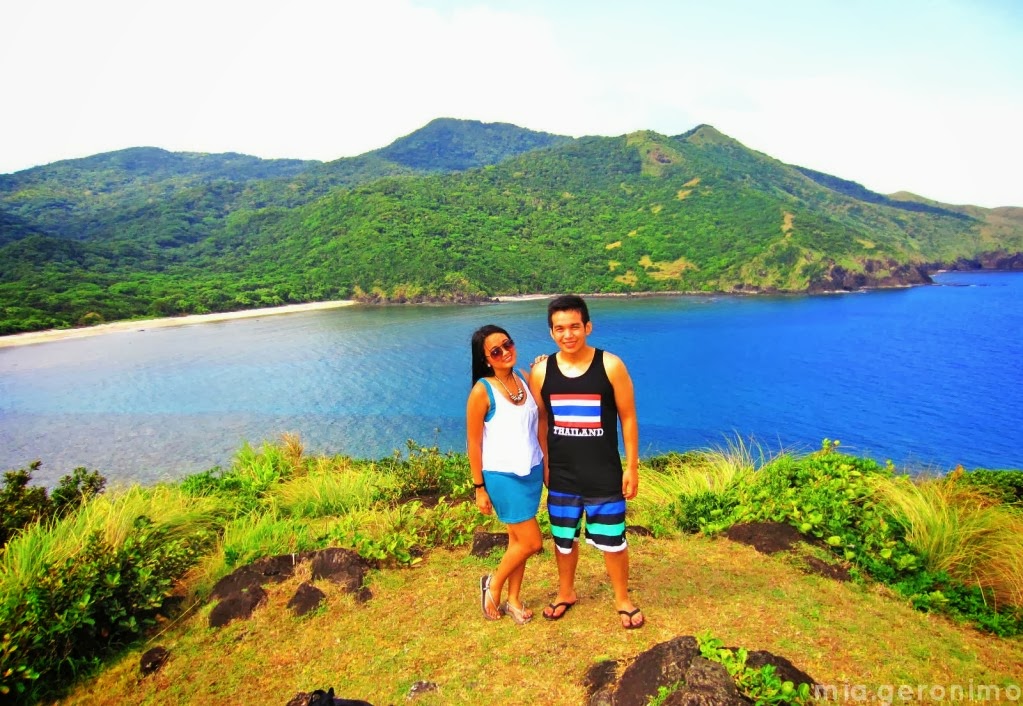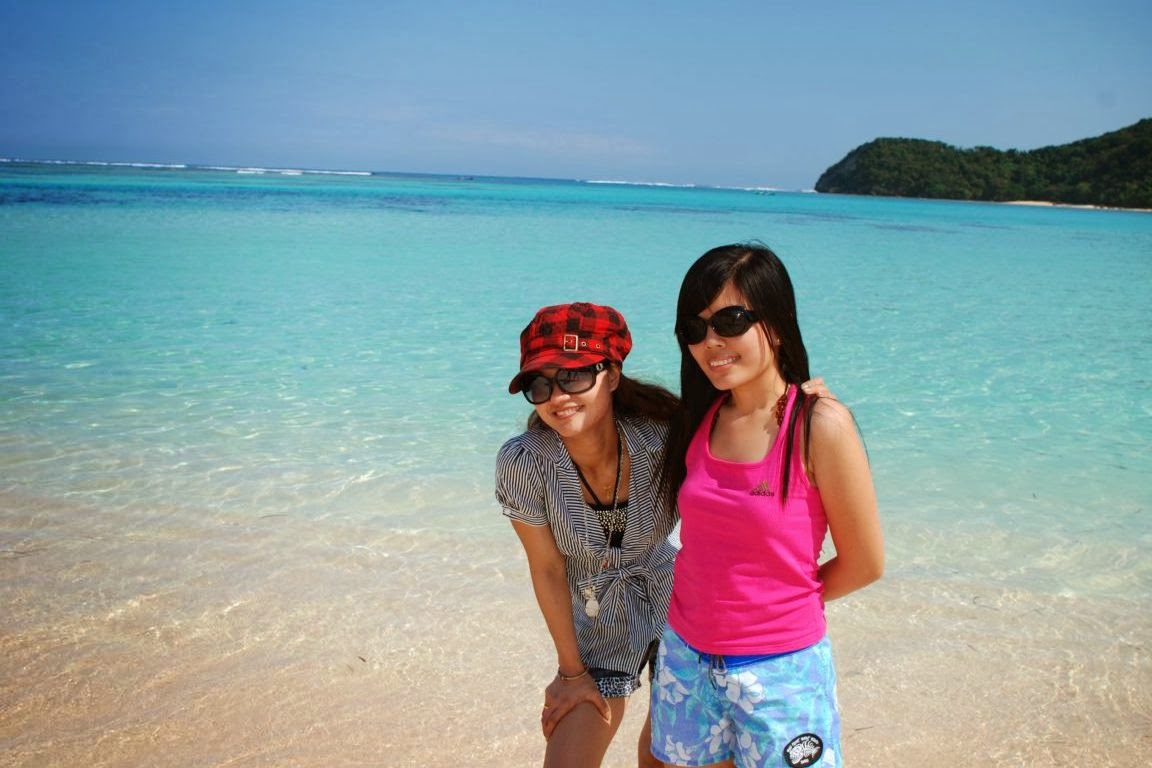Palaui Island lies off the northwestern part of a large promontory in San Vicente, in the municipality of Santa Ana, Cagayan province. It is 10 kilometres (6.2 mi) at its longest and about 5 kilometres (3.1 mi) at its widest and moderately high. The western shore of the island appears bold, but on the eastern side, a reef projects from its side for 2.4 kilometres (1.5 mi), the edge of it being 0.8 kilometres (0.50 mi) from and extending around the small islet of Escucha, east of Palaui.
 The Dos Hermanos rocky islets lie off Cape Engaño, in the northern point of Palaui, and there are some rocks off the northeast point of the island, about 1.6 kilometres (0.99 mi) eastward of the cape. Gran Laja island, a low rock islet surrounded by breakers, is one of the rocks located northeast off Palaui.
The Dos Hermanos rocky islets lie off Cape Engaño, in the northern point of Palaui, and there are some rocks off the northeast point of the island, about 1.6 kilometres (0.99 mi) eastward of the cape. Gran Laja island, a low rock islet surrounded by breakers, is one of the rocks located northeast off Palaui.At the southwest end of Palaui Island is Puerto Point, a high, wooded bluff. East of the point and south of Palaui is Rona Island, a low, wooded island with a white base of sand and rocks. Escucha Island is a high and wooded islet east of Palaui, and beyond Rona Island when seen from southwestward through the channel between Palaui Island and the mainland, where a few more islets are located.



At the northeastern tip of the province of Cagayan in Luzon lies Sta. Ana – a Special Economic Zone bustling with some modern industrial establishments, casinos and other urban gaming facilities. Blessed with a beautiful coastline, this small town bears the rural and laid-back lifestyle amidst some urban features. What makes this small quiet town is the island off its shore offering long stretches of white sandy beaches and coves, a century old lighthouse, concealed waterfalls and a scenic ragged terrain embraced by howling winds and huge waves.
 This is Palaui Island. Palaui Island is made up of volcanic debris, lying between the South China Sea and the Pacific Ocean. It is a protected area having been declared as National Marine Reserve in 1994, abundant in wildlife, marine life and timber. With only a small community living in the island, it is largely uninhabited. It is politically under the jurisdiction of Sta. Ana and it is home to a small fishing community. Palaui Island has no electricity, nor commercial accommodation. Its main attraction aside from the gorgeous beaches is the 18th century lighthouse built by the Spaniards called Farol de Cabo Engaño or Cape Engaño Lighthouse.
This is Palaui Island. Palaui Island is made up of volcanic debris, lying between the South China Sea and the Pacific Ocean. It is a protected area having been declared as National Marine Reserve in 1994, abundant in wildlife, marine life and timber. With only a small community living in the island, it is largely uninhabited. It is politically under the jurisdiction of Sta. Ana and it is home to a small fishing community. Palaui Island has no electricity, nor commercial accommodation. Its main attraction aside from the gorgeous beaches is the 18th century lighthouse built by the Spaniards called Farol de Cabo Engaño or Cape Engaño Lighthouse.How to Get There Visitors can get to Palaui Island by:
 Plane. AirPhil Express’ and Cebu Pacific’s flight to Tugeugarao from Manila. Travel time by airplane is about one hour. Bus. From Manila to Tuguegarao with daily trips every hour. Travel time by land is about 11 – 12 hours. Jeepneys. From Tabuk, jeepneys will take you to Tuguegarao. Bus from Ilocos and Abra to Tuguegarao. Bus from Manila direct to Sta. Ana. From Tuguegarao, a bus or van ride will take you to Sta. Ana in approximately two hours. Barangay San Vicente in Sta. Ana town is the jump off point to Palaui Island. Fishing boats can be chartered for a short half-an hour ride to the island from San Vicente port.
Plane. AirPhil Express’ and Cebu Pacific’s flight to Tugeugarao from Manila. Travel time by airplane is about one hour. Bus. From Manila to Tuguegarao with daily trips every hour. Travel time by land is about 11 – 12 hours. Jeepneys. From Tabuk, jeepneys will take you to Tuguegarao. Bus from Ilocos and Abra to Tuguegarao. Bus from Manila direct to Sta. Ana. From Tuguegarao, a bus or van ride will take you to Sta. Ana in approximately two hours. Barangay San Vicente in Sta. Ana town is the jump off point to Palaui Island. Fishing boats can be chartered for a short half-an hour ride to the island from San Vicente port.







No comments :
Post a Comment